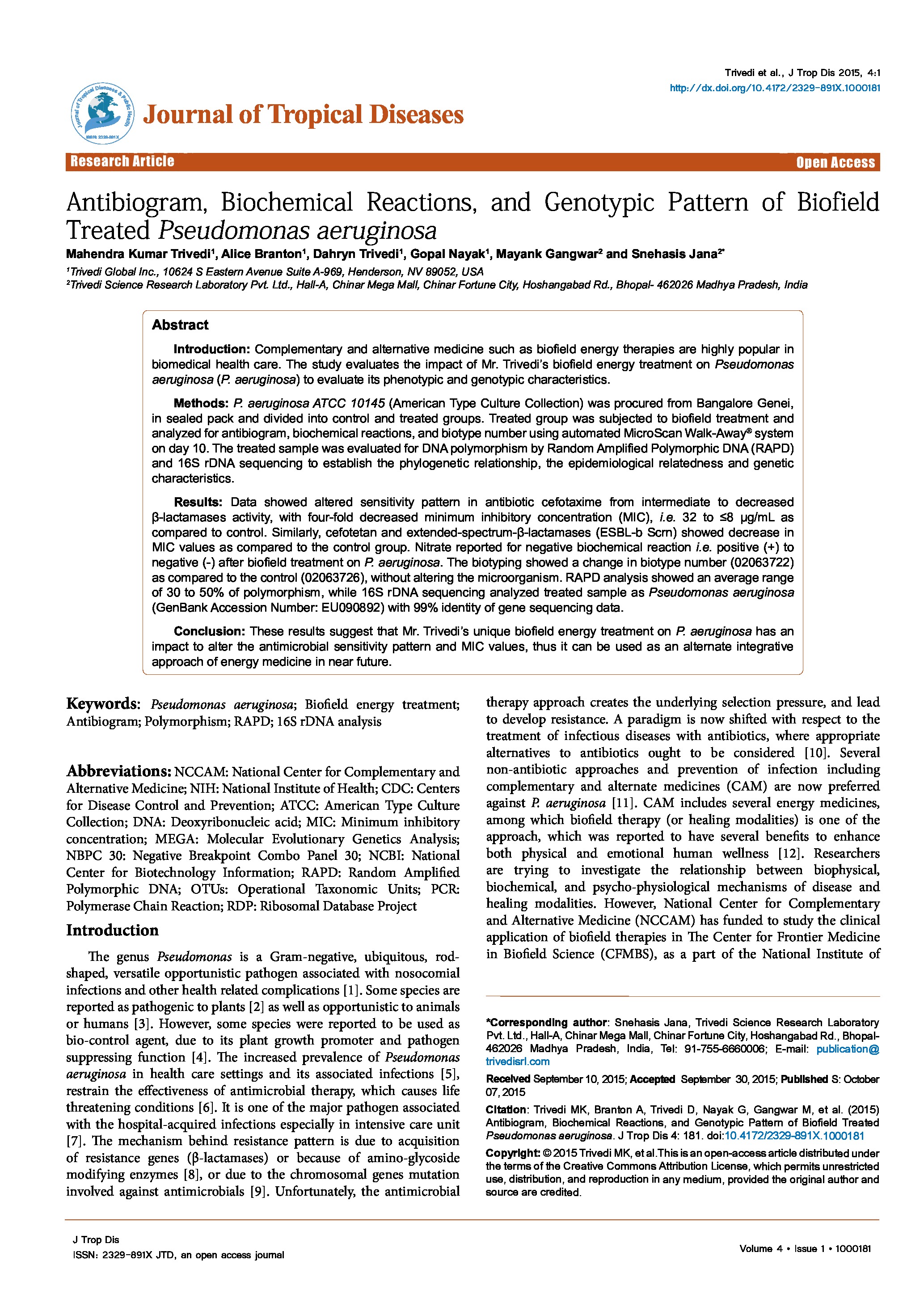Antibiogram, Biochemical Reactions, and Genotypic Pattern of Biofield Treated Pseudomonas aeruginosa
Affiliation
Trivedi Global Inc.; Trivedi Science Research Laboratory Pvt. Ltd.
Main category
Natural Sciences (Biology)
Abstract
Introduction: Complementary and alternative medicine such as biofield energy therapies are highly popular in biomedical health care. The study evaluates the impact of Mr. Trivedi’s biofield energy treatment on Pseudomonas aeruginosa (P. aeruginosa) to evaluate its phenotypic and genotypic characteristics.
Methods: P. aeruginosa ATCC 10145 (American Type Culture Collection) was procured from Bangalore Genei, in sealed pack and divided into control and treated groups. Treated group was subjected to biofield treatment and analyzed for antibiogram, biochemical reactions, and biotype number using automated MicroScan Walk-Away® system on day 10. The treated sample was evaluated for DNA polymorphism by Random Amplified Polymorphic DNA (RAPD) and 16S rDNA sequencing to establish the phylogenetic relationship, the epidemiological relatedness and genetic characteristics.
Results: Data showed altered sensitivity pattern in antibiotic cefotaxime from intermediate to decreased β-lactamases activity, with four-fold decreased minimum inhibitory concentration (MIC), i.e. 32 to ≤8 µg/mL as compared to control. Similarly, cefotetan and extended-spectrum-β-lactamases (ESBL-b Scrn) showed decrease in MIC values as compared to the control group. Nitrate reported for negative biochemical reaction i.e. positive (+) to negative (-) after biofield treatment on P. aeruginosa. The biotyping showed a change in biotype number (02063722) as compared to the control (02063726), without altering the microorganism. RAPD analysis showed an average range of 30 to 50% of polymorphism, while 16S rDNA sequencing analyzed treated sample as Pseudomonas aeruginosa (GenBank Accession Number: EU090892) with 99% identity of gene sequencing data.
Conclusion: These results suggest that Mr. Trivedi’s unique biofield energy treatment on P. aeruginosa has an impact to alter the antimicrobial sensitivity pattern and MIC values, thus it can be used as an alternate integrative approach of energy medicine in near future.
DOI
10.18147/smn.2017/paper:520
Do you have problems viewing the pdf-file? Download paper
here
If the paper contains inappropriate content, please
report the paper. You will be redirected to the landing page.
